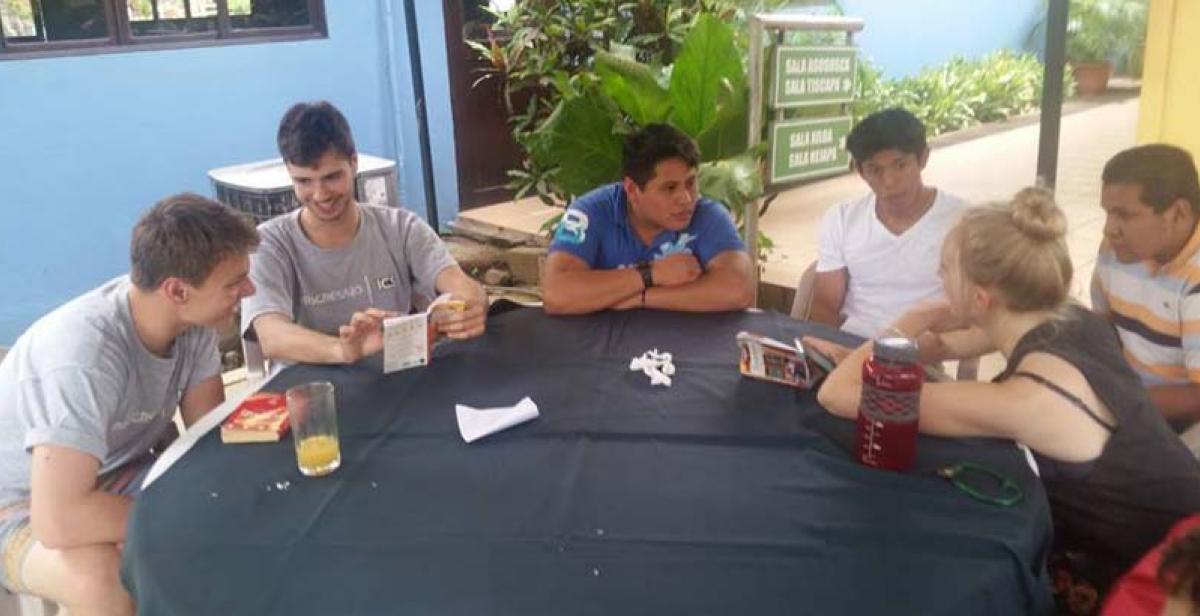After doing some last minute fundraising and packing, we left for Nicaragua on Sunday. After only 22 hours of busses, planes and waiting in airport security, we had arrived. Stepping out of the airport into a hot and humid night was the moment that it finally clicked that we were in a very different country to sunny England. After strapping our bags to the top of a bus, we drove through Managua and I was immediately surprised by the amount of colour in the city, huge illuminated yellow sculptures of trees line the main road through Managua to celebrate the victory won along the same road during the revolution. Brightly coloured shops, walls, billboards and signs created a vibrant and very different atmosphere.
The next day we visited the Progressio office in Managua and the British Consulate to sign the guest book, which all the previous cycles had done as well. We then had the chance to explore Managua further and experience some more of the local culture by visiting museums and local monuments, as well as looking out from a viewpoint over the city and the stunning Lake Managua. From the viewpoint, I was surprised to see just how green the city was. From above it looks like a sea of trees with only a few buildings poking out between them, but when you walk through the streets it is as bustling as any other city.
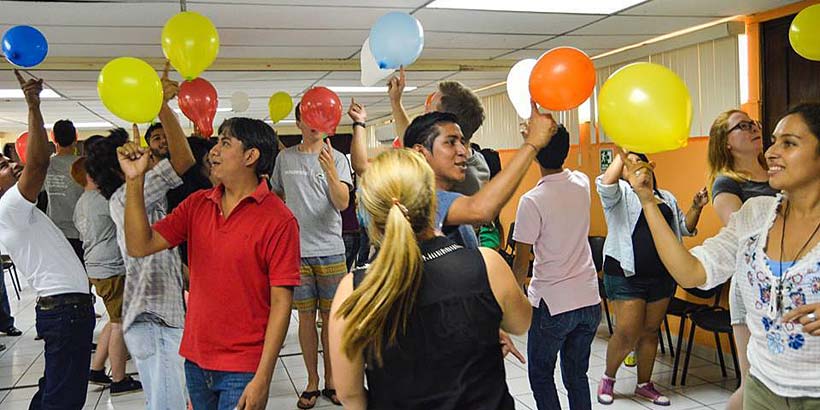
After getting to know our surroundings, we started with a briefing on our groups and the projects we would be working on, the first of many to come in the following days. At this time we learned that our group (Group Two) would be working to improve the national park surrounding the Masaya Volcano. The volcano was originally named by the Spanish as the ‘7th gate to hell’ due to its frequent eruptions and plumes of smoke bellowing from it. As it is still an active volcano it is a significant tourist attraction and the aim of our project is to capitalise on this in order to boost the local economy through tourism, while working with the locals to help conserve the national park and provide an alternate source of income, so that further deforestation of the area is not needed.
Tuesday morning was an early start with the meeting of the national volunteers. After breakfast, we had the normal awkward introductions and trying to learn each others names, which was balanced out by the enthusiasm of both groups. This was followed by a morning of team building and group briefings, while we learned the value of our dual language volunteers, as attempting to have an entire conversation using only gestures is something none of us have quite mastered yet.
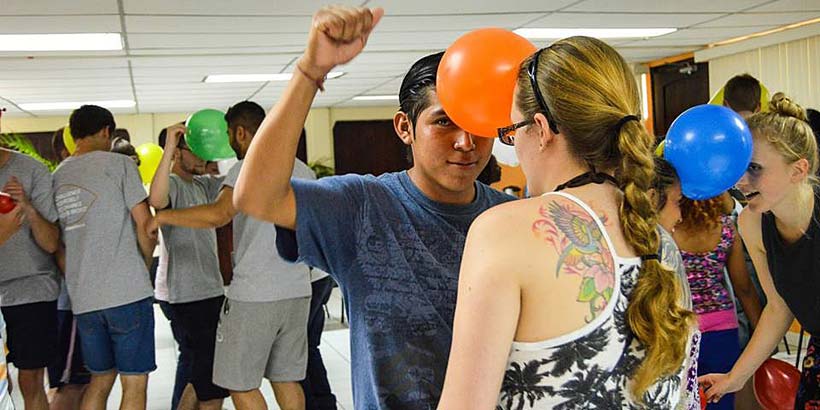
After some more team building, Tuesday afternoon we headed off to play a few games of football with the national volunteers. Luckily the teams were mixed or I have the feeling that it would have been a very one-sided tournament. After a quick shower and putting on the least sweaty clothes that we owned, everyone headed off to an art exhibition at the Spanish embassy, the opening of which we had been invited to. The exhibition was presented in a mixture of Spanish and Portuguese so we had a chance to improve our language skills, as well as learning about the programme of cutting edge design and art in Central America, in partnership with the Spanish government, which has led to some very interesting exhibits across the continent.
Wednesday consisted of some more team building activities and preparing for the cultural exchange that was being held in the evening. As we had been talking extensively in a mixture of Spanish, English and dubious sign language for the past day, we were already pretty familiar with the other volunteers, but having an opportunity to learn about each other’s culture was certainly exciting.
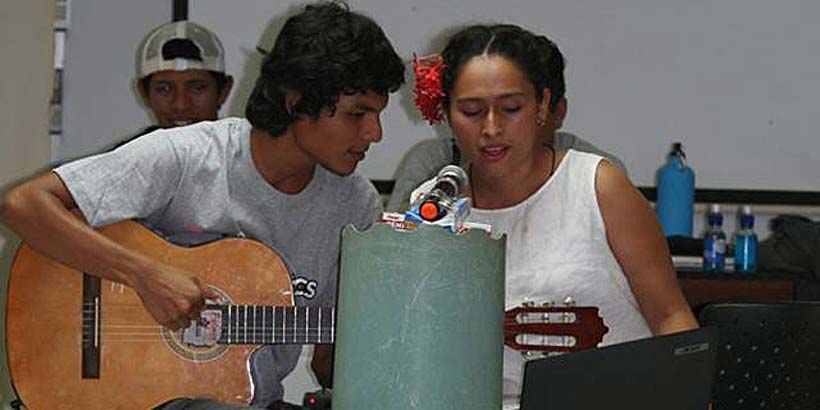
The national volunteers performed a traditional dance and played a local song on a guitar while singing. The UK volunteers followed by getting everyone to play a game of musical chairs and attempting to rap in Spanish, followed by demonstrating a selection of dances that people do in the UK, minus the worm.
The next day we started on our roles and I started writing this interesting blog, after which it was back on the bus and off to meet our host families in Masaya.
Written by ICS volunteer Tom Nevett
Llegada en Nicaragua y semana introductoria
Después de recaudar fondos y de la preparación de maletas a última hora, partimos para Nicaragua. Después de 22 horas de autobuses, aviones y espera en la aduana, llegamos. Al salir del aeropuerto, el calor y la humedad nos dimos cuenta de que estábamos en un país muy diferente a la soleada Inglaterra. Después de subir nuestras maletas en el techo del autobús, viajamos por Managua y la gran variedad de colores me sorprendió, inclusive las esculturas iluminadas de árboles amarillos muy grandes para celebrar la victoria de la revolución en la misma calle. Las tiendas, las paredes, las carteleras y las señales de colores vivos crearon una atmosfera viva y muy diferente.
El día siguiente visitamos la oficina de Progressio y el consulado británico para firmar el libro de visitas, que todos los ciclos anteriores habían hecho también. Después, tuvimos la oportunidad de conocer Managua y experimentar más de la cultura local visitando museos y monumentos locales. También fuimos a un mirador donde tuvimos la oportunidad de ver el hermoso Lago Managua. Desde el mirador, me sorprendió observar el verdor de la ciudad, era como un mar de árboles, con unos pocos edificios en medio, pero cuando caminas por las calles, puedes notar que la cuidad es tan viva como otras ciudades.
Habiendo conocido nuestro entorno, comenzamos con una sesión informativa de nuestros grupos y proyecto, lo que sería la primera de muchas durante esta semana. Durante estas sesiones aprendimos que nuestro grupo (Grupo Dos) trabajaríamos en el parque nacional Volcán Masaya. Este volcán fue nombrado por los españoles la ‘séptima entrada al inferno’, a causa de sus erupciones frecuentes y columnas de humo. Como es todavía un volcán activo es una atracción turística importante. El objetivo de nuestro proyecto es capitalizar a guías turísticos y ambientales como una alternativa para generar ingresos y ayudar a proteger el parque nacional a través de campañas ambientales que contribuyan a disminuir la deforestación.
El martes por la mañana, nos despertamos pronto para una reunión con los voluntarios nacionales. Después del desayuno, tuvimos actividades para conocernos – todo el grupo estaba muy entusiasmado. Pasamos la mañana haciendo ejercicios para fomentar el espíritu del grupo y sesiones informativas en nuestros equipos, apreciando el valor de nuestros voluntarios con conocimientos de ambos idiomas, porque tener una conversación solamente usando lenguaje corporal es algo que nadie ha aprendido todavía.
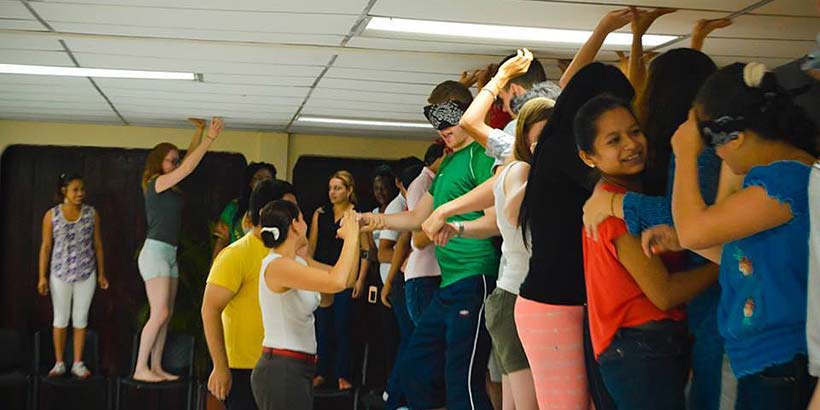
Después de más actividades en equipos el martes por la tarde, jugamos futbol con los voluntarios nacionales. Afortunadamente los equipos eran mezclados, porque si no habría sido un torneo muy desequilibrado. Después de una ducha, fuimos invitados a la apertura de una exposición a la embajada española. Esta fue presentada en una mezcla de español y portugués y entonces tuvimos la oportunidad de desarrollar nuestras competencias lingüísticas, y conocer el programa de arte y diseño innovador en Centroamérica en colaboración con el gobierno español, quienes han creado algunas exposiciones muy interesantes a lo largo del continente.
El miércoles tuvimos más actividades en equipos y algunas preparaciones para el intercambio cultural de la noche. Comunicando en una mezcla de español, inglés y lenguaje de señas, nos he conocido bastante bien, pero la oportunidad de aprender de nuestras culturas respectivas era emocionante. Los nicaragüenses hicieron un baile tradicional tocaron y cantaron una canción local usando la guitarra. Los británicos organizaron un juego de ‘sillas musicales’ (musical chairs), hicieron un rap en español y demostraron una selección de bailes.
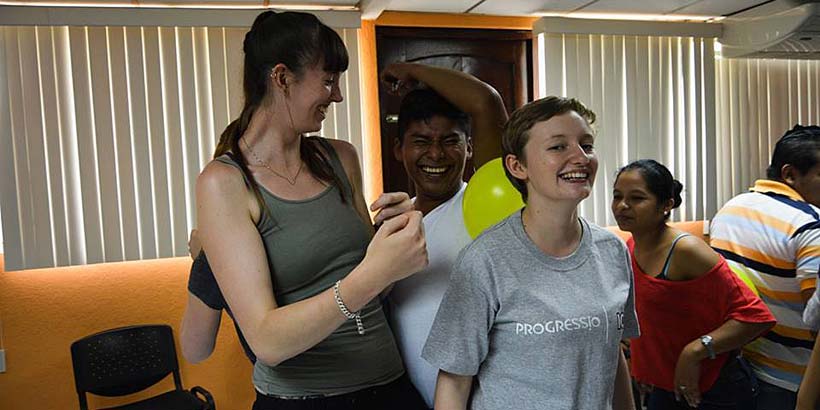
El día siguiente empezamos con nuestros roles y yo empecé a escribir este interesante blog (con suerte!). Después, fuimos a conocer nuestras familias anfitrionas en Masaya.
Escrito por el voluntario de ICS Tom Nevett


